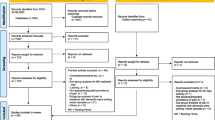Abstract
Objectives
Pain is very common among older persons living in nursing home, affecting 45% to 80% of residents, interfering with daily activities and quality of life. Aims of the study are: 1) to measure the analgesics non-prescription in nursing home residents who present pain symptoms; 2) to identify the main determinants of analgesics non-prescription.
Design
Retrospective cross-sectional analysis.
Setting
Data from an observational study (‘Incidence of pNeumonia and related ConseqUences in nursing home Residents’ [INCUR] study).
Participants
800 older persons living in 13 French nursing homes.
Measurments
Pain symptoms were definied by one of the following criteria: i) Presence of pain affecting the individual’s function in the Activities of Daily Living; ii) Presence of daily pain, and/or; iii) Severe pain measured with a visual analogue scale.
Results
Among the patients originally included in the study, 288 (36%) reported pain symptomatology (mean age 86.9 [SD 7.2] years, 220 (76%) participants women). Amongst these, 138 (47.9%) were treated with non-opioid analgesic drugs, 52 (18.1%) with opioids, and 98 (34%) did not receive any analgesic prescription. An adjusted logistic regression analysis found that the strongest determinant of analgesics non-prescription was the number of concomitantly prescribed drugs (p<0.001). Age, education, and frailty were not associated with prescription of analgesic drugs.
Conclusions
Pain undertreatment is very common among older persons living in nursing homes. The number of prescribed medications represents the most relevant risk factor for the analgesics non-prescription. Our findings document the importance of reviewing prescriptions in nursing home residents.
Similar content being viewed by others
References
Harris-Kojetin L, Sengupta M, Park-Lee E, Valverde R, Caffrey C, Rome V, Lendon J. Long-Term Care Providers and services users in the United States: data from the National Study of Long-Term Care Providers, 2013–2014. Vital Heal Stat Ser 3, Anal Epidemiol Stud, 2016;:x–xii; 1–105.
Hagen S. Rising demand for long-term services and supports for elderly people Available at: http://www.cbo.gov/sites/default/files/cbofiles/attachments/44363-LTC. pdf%0Ahttps://scholar.google.com/scholar?q=Rising+demand+for+long-term+services+and+supports+for+elderly+people&btnG=&hl=en&as_sdt=0,44#0.
Reid MC, Eccleston C, Pillemer K. Management of chronic pain in older adults. BMJ 2015;350:h532–h532.
Smith AK, Cenzer IS, Knight SJ, Puntillo KA, Widera E, Williams BA, Boscardin WJ, Covinsky KE. The epidemiology of pain during the last 2 years of life. Ann Intern Med 2010;153:563–569.
Lukas A, Mayer B, Fialová D, Topinkova E, Gindin J, Onder G, Bernabei R, Nikolaus T, Denkinger MD. Pain characteristics and pain control in european nursing homes: Cross-sectional and longitudinal results from the services and health for elderly in long term care (SHELTER) study. J Am Med Dir Assoc 2013;14:421–428.
Onder G, Cesari M, Russo A, Zamboni V, Bernabei R, Landi F. Association between daily pain and physical function among old-old adults living in the community: Results from the ilSIRENTE study. Pain 2006;121:53–59.
Gaskin DJ, Richard P. The economic costs of pain in the United States. J Pain 2012;13:715–724.
Landi F, Onder G, Cesari M, Gambassi G, Steel K, Russo A, Lattanzio F, Bernabei R. Pain management in frail, community-living elderly patients. Arch Intern Med 2001;161:2721–2724.
Demougeot L, Rolland Y, Gérard S, Pennetier D, Duboué M, Vellas B, Cesari M. Incidence and economical effects of pneumonia in the older population living in French nursing homes: Design and methods of the INCUR study. BMC Public Health 2013;13:861.
Katz S, Ford AB, Moskowitz RW, Jackson BA, Jaffe MW. Studies of Illness in the Aged: The Index of ADL: A Standardized Measure of Biological and Psychosocial Function. JAMA J Am Med Assoc 1963;185:914–919.
Paul SM, Zelman DC, Smith M, Miaskowski C. Categorizing the severity of cancer pain: Further exploration of the establishment of cutpoints. Pain 2005;113:37–44.
Hodkinson HM. Evaluation of a mental test score for assessment of mental impairment in the elderly. Age Ageing 1972;1:233–238.
Lawton MP, Brody EM. Assessment of older people: Self-maintaining and instrumental activities of daily living. Gerontologist 1969;9:179–186.
Mitnitski AB, Mogilner AJ, Rockwood K. Accumulation of deficits as a proxy measure of aging. Scientific World Journal 2001;1:323–336.
Searle SD, Mitnitski A, Gahbauer EA, Gill TM, Rockwood K. A standard procedure for creating a frailty index. BMC Geriatr 2008;8:24.
Kaye AD, Baluch A, Scott JT. Pain management in the elderly population: A review. Ochsner J 2010;10:179–187.
Reeve E, Thompson W, Farrell B. Deprescribing: A narrative review of the evidence and practical recommendations for recognizing opportunities and taking action. Eur J Intern Med 2017;38:3–11.
Guidance on the management of pain in older people. Age Ageing 2013;42:i1–i57.
Acknowledgments
We thank Drs. Luca Mollo and Sedipeh Attal at Pfizer for their help and assistance. We also thank all the people who is making the INCUR project possible, in particular the clinical and administrative personnel of the participating nursing homes: Centre Hospitalier de Castelnaudary, De Vinci, Faux-Bourg Saint Adrien, Jean Loubès, Le Pastel, Domaine de Lasplanes, La Triade, Le Castelou, Le Garnagues, Maréchal Leclerc, Montréal, Saint Jacques, Saint Joseph.
Author information
Authors and Affiliations
Corresponding author
Additional information
Conflict of interest
None of the authors have any interest to disclose.
Funding sources
he INCUR study was originally funded by Pfizer. The funding agency had no role in the design and conduction of the study. No funding was used to prepare the current manuscript.
Electronic supplementary material
Rights and permissions
About this article
Cite this article
Nunziata, V., Proietti, M., Saporiti, E. et al. Pain Management in Nursing Home Residents: Results from the Incur Study. J Nutr Health Aging 24, 1019–1022 (2020). https://doi.org/10.1007/s12603-020-1513-2
Received:
Accepted:
Published:
Issue Date:
DOI: https://doi.org/10.1007/s12603-020-1513-2




